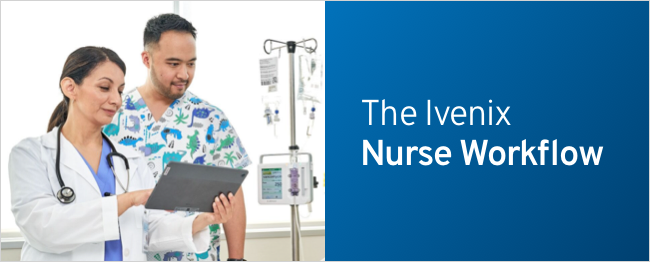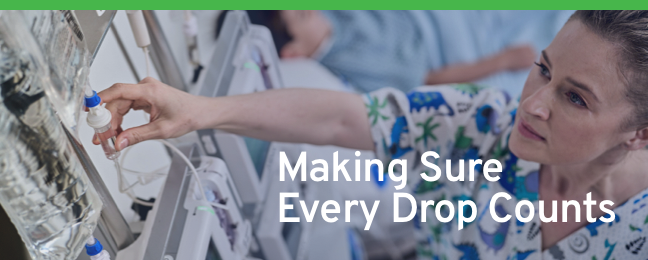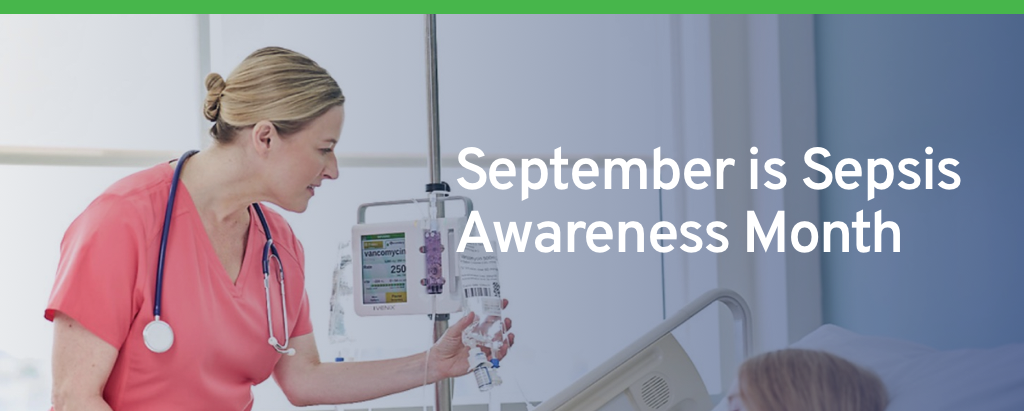
Over a decade ago the Sepsis Alliance designated September as Sepsis Awareness month.1 Although many treatment advances have been made since then,2 the fundamental priorities remain the same: early detection3 and prompt administration of antibiotics.2 While nurses play a pivotal role in the early detection of sepsis,4 the timeliness of prescribed antibiotic administration lies solely on their shoulders.5
Although IV antibiotics can be administered by IV push, they are more commonly administered as piggyback (or secondary) infusions on an IV pump. The term “piggyback” (IVPB) is descriptive because the medication is infused through a connection to the primary fluid. This method offers a level of convenience and efficiency because the primary infusion fluid can be used to flush the line after the antibiotic bag is empty.
The setup of piggyback administration can function in one of two different ways depending on the IV pump used:7
- Head-height differential method (gravity-dependent)
- Cassette method (non-gravity dependent)
Gravity-dependent secondary infusions require gravity to infuse the piggyback medication. This method, implemented by most IV pump manufacturers, requires the user to place the primary fluid below the level of the secondary fluid. This action causes the higher fluid, in this case the piggyback medication, to infuse first.7 The nurse programs a volume to be infused (VTBI) and a rate for the secondary medication and begins the infusion. When the programmed VTBI reaches zero, the primary infusion rate resumes. With this method, the pump does not know what is infusing above it. It does not know which bag is being infused.
Non-gravity dependent secondary infusions do not rely on gravity to determine which container – the primary fluid or secondary fluid – infuses. These systems have a dedicated secondary port that draws fluid independently from the secondary container. The pump knows what is going on above it. It knows which bag is being infused.8
Common Secondary Administration Errors
Although IVPB administration of antibiotics is efficient, errors can and do occur. Three of the most common ones are:
- Incorrect secondary infusion set up.
Some IV pumps require the user to place the secondary container a certain distance above the primary container when setting up the piggyback (secondary) infusion. This height differential is required to ensure that the secondary infuses and not the primary. It also affects the accuracy of the infusion rate. Errors such as concurrent primary and secondary flow, primary-only flow, and rate inaccuracies are introduced when the height differential is not adequate.7 - Forgetting to unclamp the secondary line.
Perhaps the most common error associated with piggyback infusions is failure to unclamp the secondary tubing. If this occurs using systems that lack the ability to detect an upstream secondary line occlusion, the primary fluid will infuse instead, resulting in a delay in treatment.7 - Incomplete delivery of the secondary medication.
This error occurs when the patient does not receive the full prescribed dose of antibiotic.9 This can happen when a continuous infusion is not ordered to follow the infusion of the antibiotic and the nurse forgets to program a flush. The medication remaining in primary and secondary tubing is not administered to the patient. Underdosing also happens when medication remains in the secondary tubing.
How the Ivenix Infusion System Helps Address Common Secondary Administration Errors
The Ivenix Infusion System is a non-gravity dependent smart pump developed to help address the errors mentioned above.
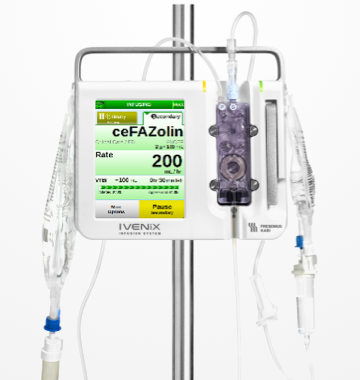
Upstream occlusion alarm on secondary line
If the nurse forgets to unclamp the secondary line, an upstream occlusion alarm will sound. This helps ensure that there is not a delay in treatment.8

The upstream occlusion alarm screen gives information about the status of the infusion and aids the clinician in troubleshooting the alarm. No abbreviations are used.
Infuse until empty
The Ivenix Infusion System is able to infuse the entire piggyback volume, without requiring nurses to return to restart the primary. This means the LVP will infuse the programmed volume to be infused, plus any overfill in the bag. The infusion is complete when the pump detects that both the bag and the secondary tubing attached to the cassette are empty. This option is the default for piggyback intermittent drugs and blood products. This helps ensure that the patient receives the full prescribed dose of medication.8 The “infuse until empty” feature is only one of many important innovations in infusion therapy we have implemented.
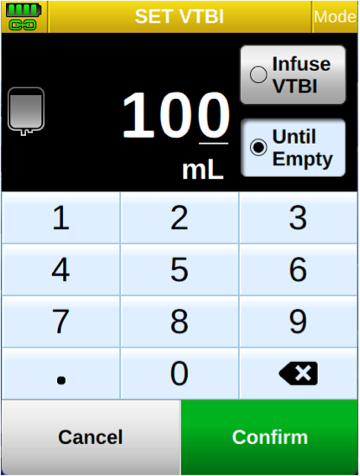
The Ivenix Large-Volume Pump allows you to deliver the bag’s entire volume and full dose with the infuse-until-empty feature.
Please see full list of warnings and cautions associated with this device
*First and only in US market as of 8/24.
†Overall accuracy +/- 5% under the following conditions: 0.5-1000 mL/hr; 5°C to 35°C ambient temperature; 10 PSIA-15.5 ambient pressure; -100 mmHg backpressure; +/- 24” inlet head height; viscosities up to 70% dextrose solution; up to 96-hour duration; microbore and macrobore sets.
- “Sepsis Awareness Month.” Sepsis Alliance, 21 Jan. 2019, https://www.sepsis.org/get-involved/sepsis-awareness-month/.
- Jackson, Karen E., and Matthew W. Semler. “Advances in Sepsis Care.” Clinics in Chest Medicine, vol. 43, no. 3, Elsevier BV, Sept. 2022, pp. 489–498.
- Sepsis Alliance. Sepsis Fact Sheet. 2023. https://www.sepsis.org/education/resources/fact-sheets/
- Chua, Wei Ling, et al. “Nurses’ Knowledge and Confidence in Recognizing and Managing Patients with Sepsis: A Multi‐site Cross‐sectional Study.” Journal of Advanced Nursing, vol. 79, no. 2, Wiley, Feb. 2023, pp. 616–629.
- American Nurse Journal. “Antibiotic Stewardship for Staff Nurses.” American Nurse, 11 May 2016, https://www.myamericannurse.com/antibiotic-stewardship-staff-nurses/.
- Glynda Rees Doyle and Jodie Anita McCutcheon. “7.6 Administering Intermittent Intravenous Medication (Secondary Medication) and Continuous IV Infusions.” Clinical Procedures for Safer Patient Care.
- Giuliano, Karen K., et al. “Secondary Medication Administration and IV Smart Pump Setup.” The American Journal of Nursing, vol. 121, no. 8, Ovid Technologies (Wolters Kluwer Health), Aug. 2021, pp. 46–50.
- Ivenix Infusion System Large Volume Pump (LVP) Instructions for Use. Bad Homburg, Germany: Fresenius Kabi, 2024.
- Open Resources for Nursing (Open RN), et al. Chapter 23 IV Therapy Management. Chippewa Valley Technical College, 2021.
